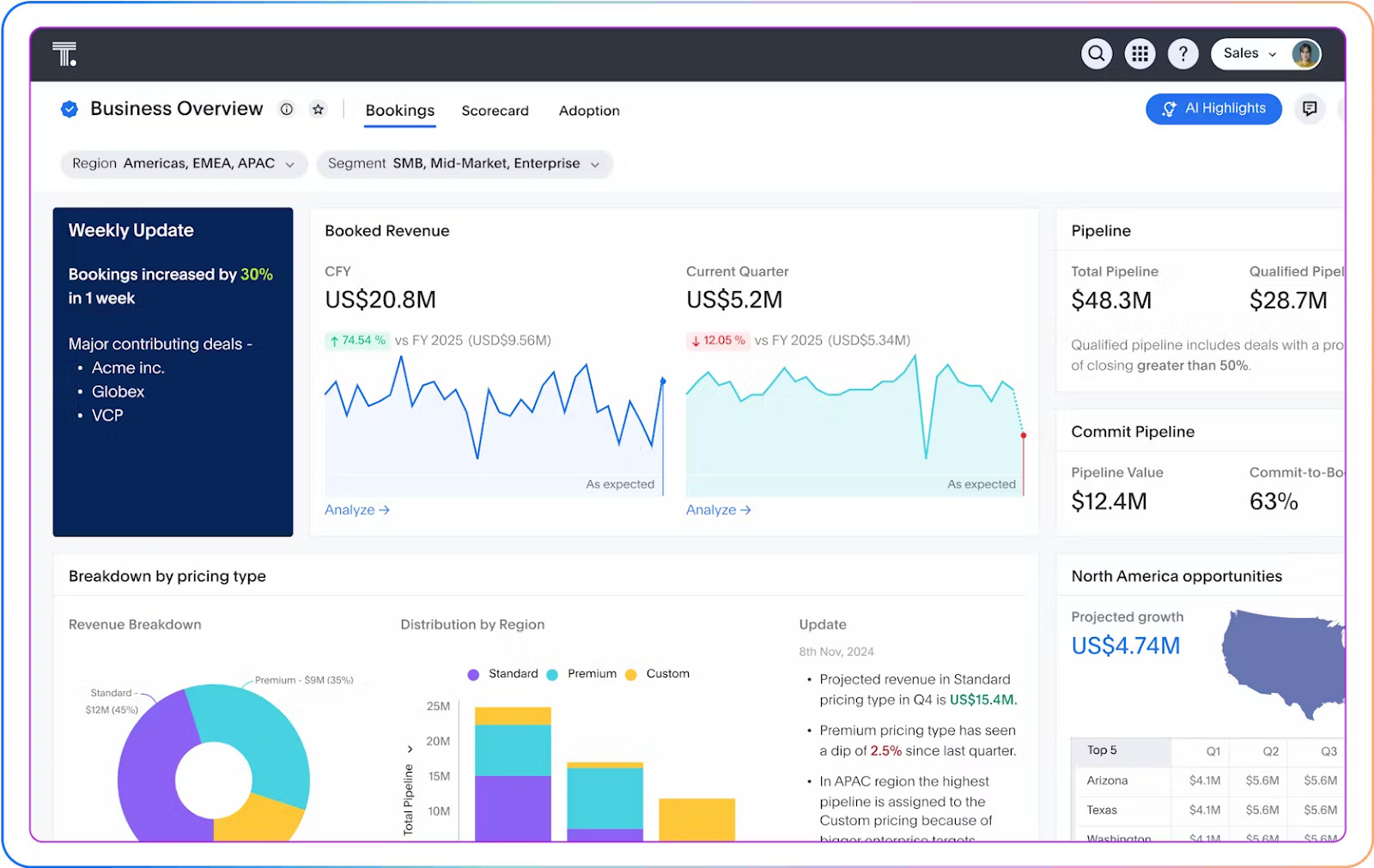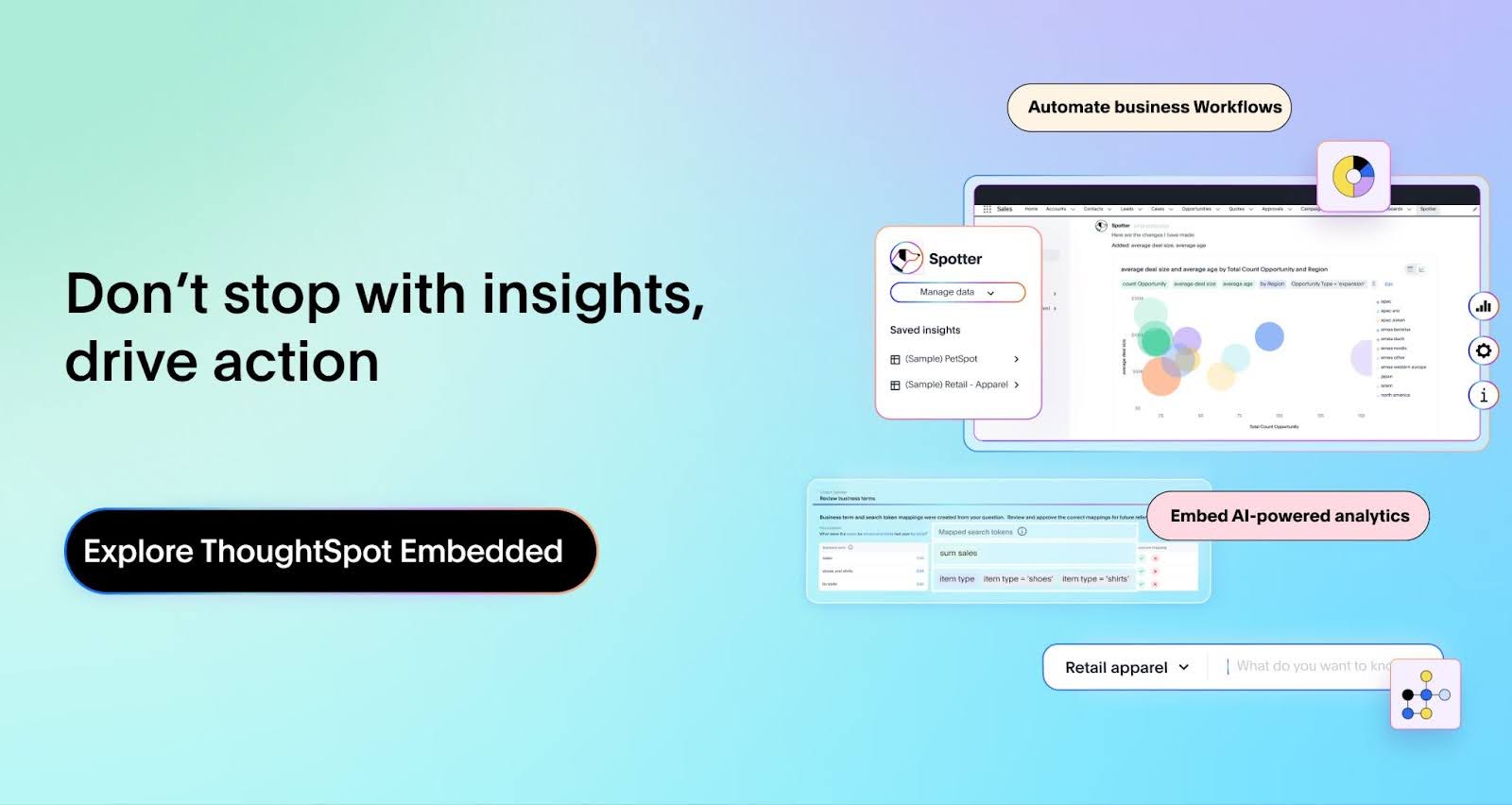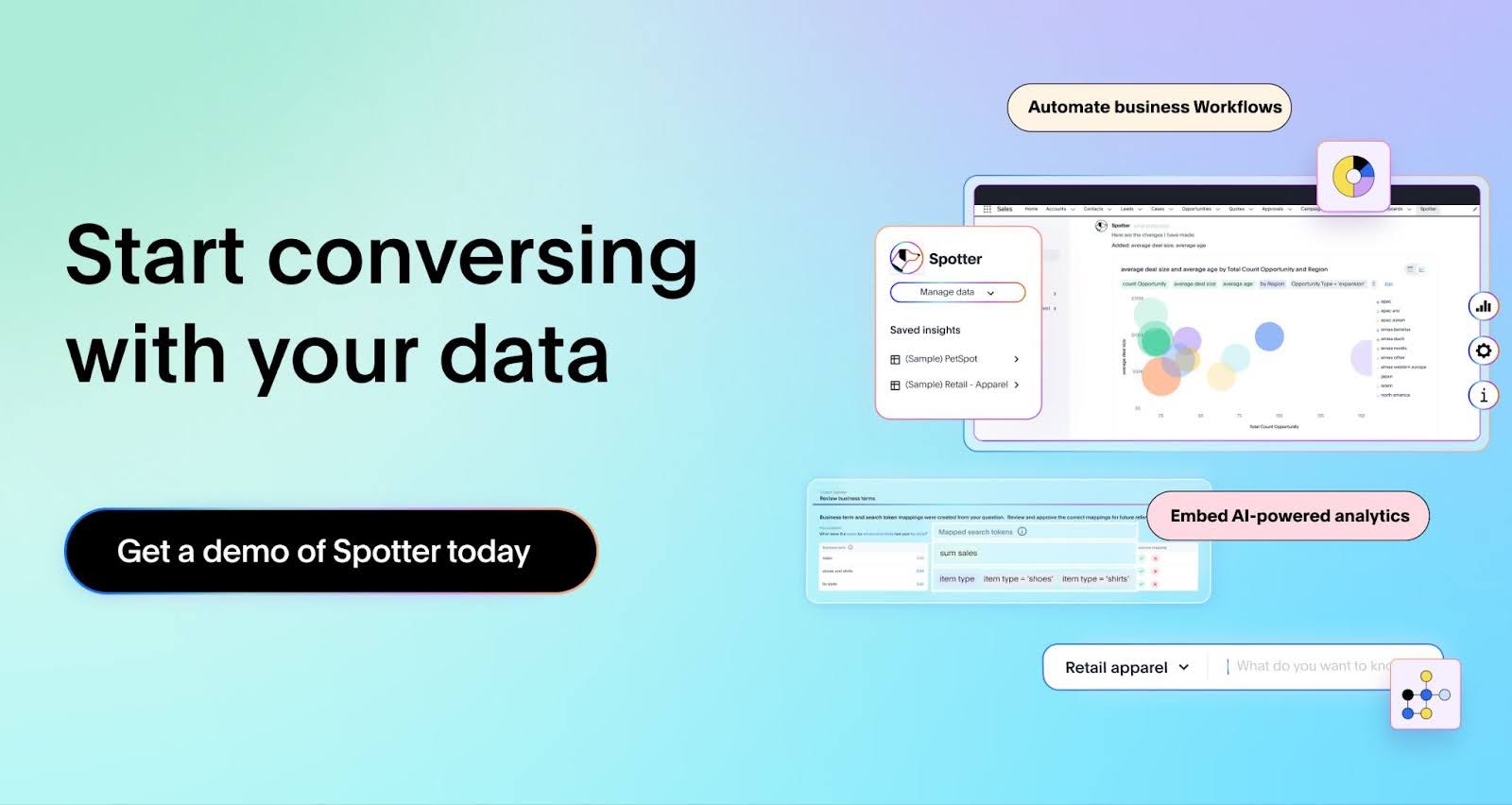Embedded AI: How it can change the way you work (original) (raw)
Better, faster, and easier—that’s the promise of AI. But if using it means jumping between a dozen tools or constantly switching apps, it starts feeling more like a burden than a breakthrough. The good news? We’re already seeing the tide turn. According to Google Cloud Research, 74% of organizations are already seeing ROI from their GenAI investments.
The key? Accessibility_._ AI needs to work where you already do—built right into your tools and devices. No extra steps, no friction, just powerful intelligence at your fingertips.
That’s exactly the power of embedded AI. It’s AI that fits into your world, not the other way around.
Let’s dig into how embedded AI actually works, why it’s becoming essential for modern business teams, and how you can start seeing real results fast.
Table of contents:
- What is embedded AI?
- Benefits of embedding AI into business applications
- Use cases for embedded AI
- How embedded AI works (and how to implement it)
- Essential features that power embedded AI
What is embedded AI?
Embedded AI weaves powerful automation and generative AI capabilities directly into your existing software, devices, and systems. Rather than switching between different apps, workflows, or learning new tools, embedded AI operates seamlessly in the background. It analyzes your data, manages repetitive data discovery, identifies anomalies, and explains key drivers—all at machine speed—providing you with insights exactly when you need them.
Whether you need your systems to support data questions via natural language, learn from patterns, or predict what might happen next, you can embed these capabilities directly into your existing tool. Your normal day-to-day business workflows just become naturally more intelligent.
How is embedded AI different from traditional AI?
Now that we have defined embedded AI, it is worth exploring how it compares to the more traditional approaches that many businesses still rely on.
Traditional AI tools, such as standalone apps and third-party chatbots, often sit outside business workflows. They require users to switch contexts, request data manually, or depend on others to interpret results.
Embedded AI takes a different approach. Like headless BI, it brings intelligence directly into the software and systems people already use—minimizing friction, reducing latency, and enabling real-time, in-the-moment decisions.
While the boundary between embedded and traditional AI is increasingly fluid, the primary difference lies in user experience and responsiveness, which sets them apart.
Here’s how they compare:
| Feature | Embedded AI | Traditional AI |
|---|---|---|
| Location of processing | Runs directly on local devices (edge processing), within software, or in the cloud | Runs on centralized servers or in the cloud |
| User interaction | Offers implicit assistance with seamless integration into existing systems, often invisible to the user | Requires explicit user interaction with external AI tools or systems |
| Real-time processing | Processes data in real time for immediate decisions | Often processes data in batches, with delays |
| Latency | Low latency, ideal for real-time tasks (e.g., autonomous vehicles, smart appliances) | Higher latency due to cloud or server-based processing |
Benefits of embedding AI into business applications
Personalized user experiences and insights
The days of one-size-fits-all experiences are over. Today’s users expect personalization: 76% say they get frustrated when they don’t get it, according to McKinsey. If your product isn’t delivering tailored experiences and insights, you’re already behind.
Embedded AI makes it easy to give users exactly what they want, need, and care about, whether that’s surfacing the right products, highlighting personalized recommendations, or delivering real-time insights.
Take a sales leader, for example. Instead of digging through separate logs of reports and static dashboards, they can leverage embedded analytics for a personalized snapshot of sales performance. They can review different metrics, such as total booked revenue, current quarter projections, gain AI-generated suggestions, and even converse with an agent on where to focus their attention to hit quotas. That’s the power of embedding AI for personalization at scale.

Smarter decision-making
Efficiency is important, but speed without clarity can only take your business so far. Historically, informed decision-making meant waiting for more dashboards and reports, built by data analysts. And by the time insights arrive, the moment to act has passed.
Embedded AI changes this equation by delivering real-time insights when and where they’re needed. Forget separate logins or context switching—you can spot trends, track key metrics, and make fast, informed decisions without missing a beat.
Just ask Verivox. Business teams were stuck with slow time-to-insight and limited options for exploring data. But once they embedded ThoughtSpot directly into their B2B platform, the shift was immediate: adoption soared, teams began monetizing their data, and real-time insights became the new normal.
With embedded AI, you’re shaping a future where data-driven insights become the norm rather than the exception.
Increased cost savings
Every manual process, inefficiency, and delayed decision carries a price. Whether you’re dealing with wasted time, drained resources, or missed opportunities, the longer these issues go unchecked, the more they eat into your bottom line.
But the answer isn’t stacking more AI tools on top of each other. That only adds complexity, cost, and technical debt. What you need is a solution that’s easy to integrate and scalable. That’s where embedded AI comes in.
By embedding AI, you get powerful automation and real-time intelligence where decisions are being made. That means fewer integration headaches, lower maintenance costs, and no steep learning curves. Just faster decisions and smoother operations, right out of the box.
It also lets your team stop drowning in busywork and focus on what they do best: solving real problems and delivering real impact
Monetization and competitive difference
Beyond cost savings, embedded AI analytics can open up entirely new revenue streams.
By embedding AI-powered insights directly into your product, you’re turning your data into a strategic business asset. With the ability to deliver personalized dashboards, predictive analytics, and self-serve insights, you can introduce premium features, tiered pricing models, or data-driven add-ons that customers see real value in.
It also creates an intuitive experience. When users can make smarter, faster decisions without relying on separate tools or teams, your product becomes more than just functional—it becomes a true value-driver.
Look at how MDaudit made it happen. As a healthcare compliance company, they embedded ThoughtSpot directly into their platform—empowering users to access critical insights simply by asking questions, no data team required. The result? Over 25% business growth and a 10x faster time to market, cementing their leadership in healthcare innovation.
Reduced pressure on data teams
It’s no secret that traditional BI tools put a heavy burden on data teams. Every question, follow-up, or custom report funnels through them, creating a long backlog and requiring constant context switching. Over time, this not only slows down the business but also burns out your talented teams with repetitive work.
By embedding AI-powered, self-serve analytics directly into the tools users already use, you break that cycle. Users can explore data independently, ask follow-up questions in natural language, and uncover insights in real-time—no coding, no ticketing, no delays.
That means fewer ad hoc requests for your data team and more time to focus on high-impact work, leading to faster, more agile decisions.
Use cases for embedded AI
- Smart home assistants: Ever asked Alexa to dim the lights, play your favorite playlist, or check the weather? Congrats, you’ve already used embedded AI. These assistants process voice commands in real time, making everyday tasks effortless and hands-free.
- Predictive maintenance: Imagine industrial machines being smart enough to flag a potential maintenance issue before it turns into costly downtime. By analyzing sensor data on the spot, embedded AI can trigger early maintenance alerts to save you time, money, and headaches.
- Personalized recommendations: If you’re in e-commerce, embedded AI is like having a personal shopper baked right into your platform. It learns from every interaction and serves the right products at the right time. Everything happens behind the scenes, so your customers get a ‘just for you’ experience every time they shop.
How embedded AI works (and how to implement it)
Embedded AI brings so many smart features, including natural language understanding, predictive analytics, agentic experiences, and more—right into your software products. You can integrate these capabilities in various ways, depending on your goals and the level of control you require. Here are three common methods:
1. API Integration
You don’t have to build complex AI systems from the ground up to start seeing results. In fact, many companies get started by plugging into existing AI services or pre-trained models that are ready to use out of the box.
These services are typically offered through APIs like:
- Language models like OpenAI’s GPT or Google’s Gemini API can power everything from chatbots and virtual assistants.
- Recommendation engines such as Amazon Personalize or Google’s Recommender API help personalize user experiences by suggesting relevant products, articles, or media based on user behavior and preferences.
- Image and video analysis tools, such as the Google Vision API or Amazon Rekognition, can identify objects, classify images, and detect faces.
By using these APIs, you can add sophisticated AI features to your product with minimal setup, accelerating your development timeline.
📌 Example: A healthcare app could use a medical image analysis API to automatically detect anomalies in X-rays or MRIs, helping doctors make faster, more accurate diagnoses.
2. SDKs and Low-Code Frameworks
Consider Software Development Kits (SDKs) as convenient toolboxes for developers. They include pre-built components, libraries, and even pre-trained models, which make AI integration much faster and more flexible than utilising raw APIs.
SDKs are especially handy for common and new AI tasks like:
- Computer vision: Detecting objects, faces, or even gestures in images and video
- Speech recognition: Converting spoken words into text for transcripts or voice commands
- Sentiment analysis: Interpreting the emotional tone of customer messages or reviews
- Agentic workflows: Providing an agent a broad goal, with the agent breaking it down into discrete tasks and achieving the outcome.
📌 Example: A video conferencing app could utilise a speech-to-text SDK to provide real-time subtitles during meetings, thereby making conversations more accessible to all attendees.
3. Custom model deployment (with UI integration)
When pre-built solutions don’t cut it, custom models give you full control. You can train models on your own data, tailored to the specific challenges your business faces.
Once trained, models can be deployed on-premises or in the cloud, and integrated directly into your product’s interface to power real-time intelligence for your users. This approach takes more time and resources up front, but if AI is a core part of your product’s value, this kind of customization could pay off in a big way.
📌 Example: A financial services company could embed a custom-built risk-scoring model directly into its internal CRM. Analysts can instantly assess transaction risk without leaving the tool, helping them act faster and more confidently.
Essential features that power embedded AI
It’s important to remember that not all embedded AI solutions are built the same. To build a seamless experience, you need to understand the components that power embedded solutions—and how to put them to work.
Here’s what to prioritize:
- Agentic analytics: This makes data accessible to everyone, not just analysts. With generative AI and natural language interfaces, any user can ask questions in natural language and get instant, conversational answers. It puts real-time insights into the hands of business users, with no SQL or jargon
- Interactive, low-code embedding: Time-to-market is everything. Low-code embedding makes it fast and simple to integrate AI-powered insights directly into your product’s UI—tailored to your brand, workflow, and user experience.
- Event-driven insights and automation: With event-driven capabilities, AI can trigger automated workflows, alerts, or updates in real time. For example, it can notify a sales rep when a key account is at risk or automatically reroute a support ticket based on urgency. This provides insight with built-in action.
- Modern cloud and data stack compatibility: Your AI is only as smart as the data behind it. Direct, native integration with cloud data platforms like Snowflake, BigQuery, and Databricks ensures your AI models and insights operate on live, reliable data—no duplication, no stale extracts. This enhances performance while maintaining a clean infrastructure.
- Scalability and governance: When you expand your AI capabilities across your organization or customer base, governance becomes essential. With role-based access, row-level security, audit logs, and usage controls built in, you can expand confidently while keeping data secure and compliant.
💡Your shortcut to smarter decisions: Find the right embedded AI analytics solution for your business with this buyer’s guide.
How ThoughtSpot powers embedded AI for business intelligence
Too many companies are allowing their data to gather dust, tucked away in isolated BI tools or limited to surface-level insights. With ThoughtSpot Embedded, you can now put real intelligence in the hands of every user—think natural language search, conversational AI, and infinite drill-downs, all built right into your product. And the best part? You don’t need to build everything from scratch.
With just a few lines of code, you can transform your app into a Smart App—creating intelligent experiences that drive smarter decisions and create real business impact. Whether you want to embed agentic analytics, automate workflows, or simply supercharge your dashboards with AI, ThoughtSpot Embedded makes it all effortless.
See it in action—start your free demo today and discover how ThoughtSpot Embedded can help boost revenue in days, not weeks.

